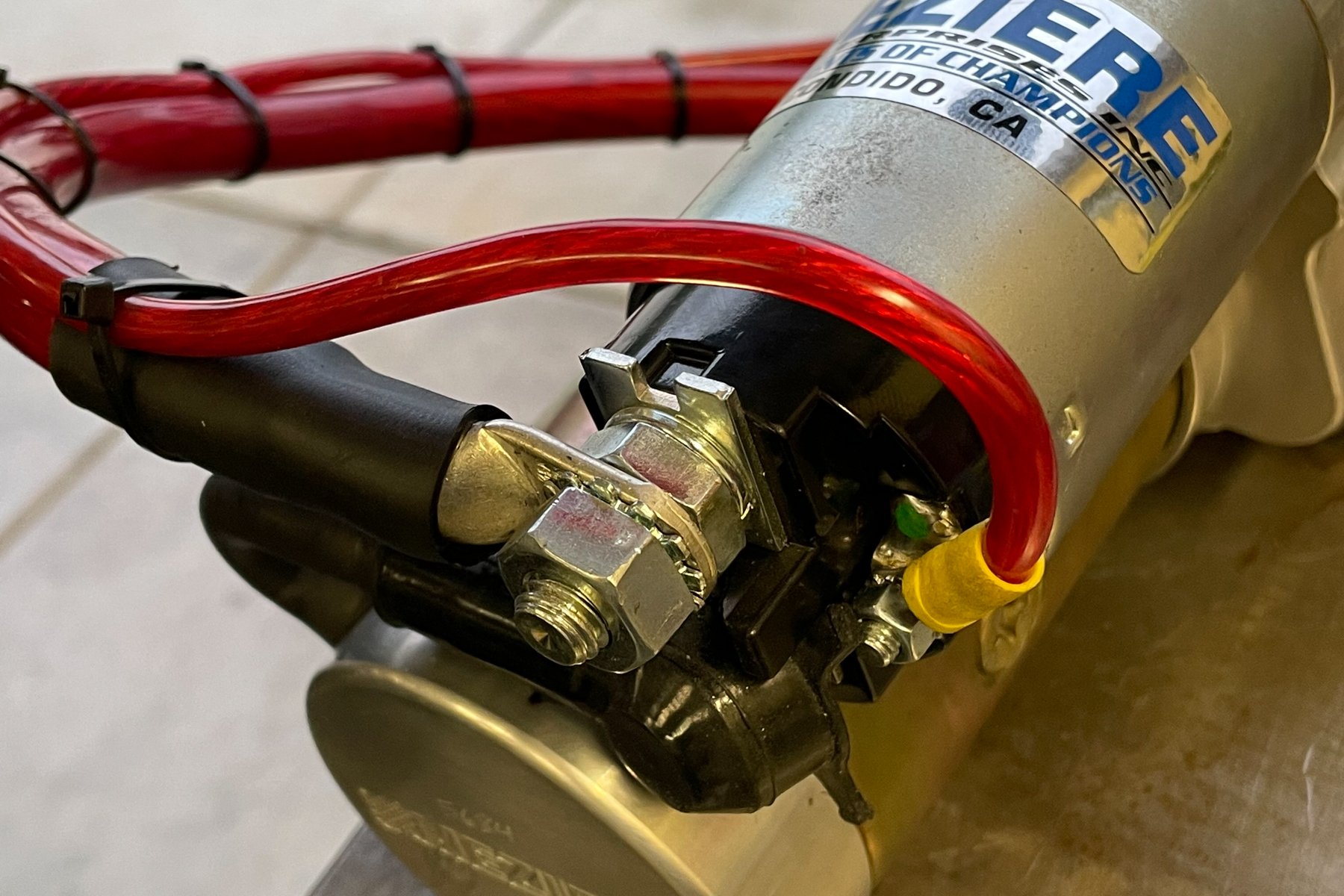In the world of automotive engineering, the starter motor is a crucial component that initiates the engine's operation. Within this system, the starter solenoid plays a vital role in ensuring smooth and efficient engine starting. This blog will explore the function, importance, and maintenance tips for the starter solenoid to help you better understand its role in your vehicle's performance.
What is a Starter Solenoid?
A starter solenoid is an electromagnetic device that controls the flow of electric current to the starter motor. It acts as a switch, connecting the battery to the starter motor when the ignition key is turned or the start button is pressed. The solenoid valve is responsible for engaging the starter gear with the engine's flywheel, which is essential for starting the engine.

How Does the Starter Solenoid Work?
1.Engagement of the Starter Gear:
When you turn the ignition key or press the start button, the solenoid valve receives an electrical signal from the ignition system. This signal activates the solenoid, which then moves the starter gear into position to mesh with the engine's flywheel.
2.Power Supply to the Starter Motor:
Once the gear is engaged, the solenoid valve also closes a set of contacts that allow high-current power from the battery to flow to the starter motor. This power supply enables the motor to crank the engine.
3.Disengagement After Starting:
As soon as the engine starts, the solenoid valve receives another signal to deactivate. It disengages the starter gear from the flywheel and interrupts the power supply to the starter motor, preventing it from running unnecessarily.
 Types of Starter Solenoids
Types of Starter Solenoids
There are two main types of starter solenoids:
1.Standard Solenoid Valve:
This is the most common type, found in conventional vehicles. It uses a simple electromagnetic mechanism to engage and disengage the starter gear.
2.Solenoid Valve with Built-in Circuit Protection:
Some modern vehicles incorporate a solenoid valve with additional circuit protection features, such as thermal overload protection or reverse polarity protection, to safeguard the electrical system.
Importance of the Starter Solenoid
The starter solenoid is a critical component for several reasons:
Efficient Engine Starting:
Without the solenoid valve, the starter motor would not receive the necessary power to crank the engine, making it impossible to start the vehicle.
Protection of the Electrical System:
The solenoid valve ensures that the high-current power from the battery is only supplied to the starter motor when needed, protecting the electrical system from potential damage.
Durability and Reliability:
A well-functioning solenoid valve ensures that the starter motor operates smoothly and extends the life of the entire starting system.
Common Issues with the Starter Solenoid
Despite its importance, the starter solenoid can develop issues over time. Some common problems include:
1.Solenoid Valve Failure:
If the solenoid valve fails to engage, the starter motor will not crank the engine, leaving you stranded.
2.Corrosion or Rust:
Over time, the contacts within the solenoid valve can corrode, leading to poor electrical connections and unreliable starting.
3.Worn-Out Mechanism:
The electromagnetic mechanism inside the solenoid can wear out due to frequent use, resulting in delayed or incomplete engagement of the starter gear.

Troubleshooting Common Issues
If your vehicle is experiencing difficulties starting, here are some steps to diagnose and address potential solenoid valve issues:
1.Check for Clicking Sounds:
A clicking sound when you turn the ignition key could indicate that the solenoid is receiving power but failing to engage the starter gear.
2.Inspect the Battery Connection:
Ensure that the battery is properly charged and connected, as a weak or disconnected battery can prevent the solenoid valve from functioning correctly.
3.Test the Ignition Switch:
A faulty ignition switch may fail to send the necessary signal to the solenoid valve, resulting in no power being delivered to the starter motor.
4.Check for Carbon Buildup:
Over time, carbon buildup on the solenoid contacts can interfere with the electrical connection. Cleaning or replacing the contacts can resolve this issue.
Conclusion
The starter solenoid may seem like a small and insignificant component, but its role in the engine starting process is indispensable. Regular maintenance, inspection, and timely replacement can help ensure that your vehicle starts reliably and efficiently. If you suspect any issues with your solenoid valve, don’t hesitate to consult a professional or refer to your vehicle’s manual for guidance.


